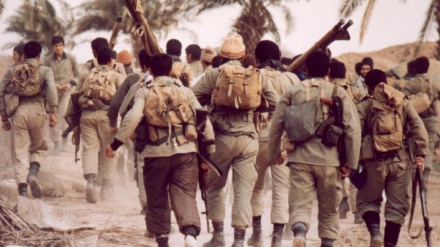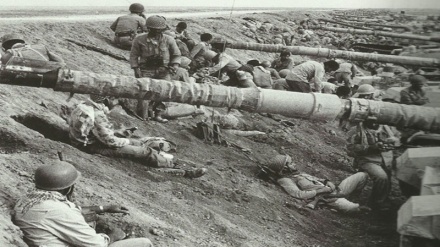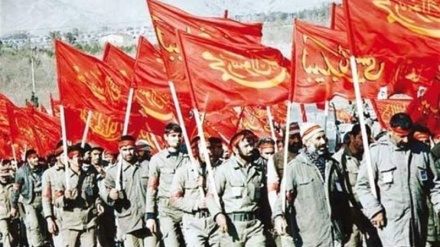Glimpses of Epic of 8-Year Holy Defense (4)
In the history of the bipolar system of the Cold War era, there is no mention of the invasion of Saddam's regime on Iran as it was agreed by the two superpowers of the West and the East. Pahlavi regime was the US puppet in Iran and executive of the White House policies in West Asia.
The overthrow of the Shah of Iran dealt a heavy blow to the US, because no other country could replace Iran to materialize the US hegemony over the region. For this reason, the US enmity towards the Islamic Revolution was very broad and deep. The most important US strategy in the beginning of the victory of the Islamic Revolution was to overthrow of the Islamic Republic of Iran’s system.
After the stealthy meeting of the US national security advisor to Jimmy Carter, Zbigniew Brzezinski, with Saddam on July 6, 1980, a new chapter was opened in US-Iraq relations. Following this, the then US president Jimmy Carter authorized the sale of five Boeing passenger planes to Iraq and a few days before Iraq’s invasion, he lifted the embargo on selling of General Electric products to Iraq.
In spite of the mistrust and pessimism between the US and Iraq, Washington considered Baghdad as an important tool and the only power that could encounter the newly-established system of the Islamic Republic of Iran. Saddam considered US support for Iraq a good opportunity for materialization of his dreams especially replacing Iran as the gendarme of the region and gaining the leadership of the Arab world.
The Iraqi dictator boosted Iraq’s friendly ties with Saudi regime, considering himself as the supporter of Riyadh against the Islam that Imam Khomeini had raised. Saddam tilted from the Arab resistance front towards Camp David to move closer to the US and keep ties with the Soviet Union. Saddam said one day after the announcement of severance of US-Iran relations on April 9, 1980, that Iraq is ready and equipped to defend its sovereignty and pride. The coordination between the US and Iraq which resulted from their convergence vis-à-vis the Islamic Revolution paved the ground for the Iraqi invasion of Iran as the final resort.
By announcing Saddam regime’s readiness to launch an all-out attack on Iran, the details of Iran's military, economic and social conditions were put at Iraq’s disposal through the tribal regime in Riyadh and thus Saddam was further emboldened. The French language magazine Jeune Afrique, on June9, 1982, wrote: One month before the outbreak of the war, Saudi rulers welcomed Saddam with a royal gift and that was the report of US spying agencies about the economic, social and military conditions in Iran. In addition, this report had detailed information on the status quo of the Iranian army, the number of its personnel, its facilities and equipment, and other information that was very confidential.
In short, the full scheme of the invasion was prepared. Iran’s army before the revolution was completely dependent on the US in terms of training, logistics and equipment. The Iranian military was given training courses in the US. The information that the US regime had on Iran's military prowess was more than the Iranian government. Therefore, this information was very valuable for the regime of Saddam who thought that he could occupy Khuzestan province within three days. The German magazine SPIEGEL wrote in this regard: There are many reasons that the Islamic Republic of Iran will be defeated in classic war with Iraq, because Iraq has a well-equipped and trained army. Herald Tribune, in an analysis in this regard wrote: American analysts believe that the Iranian army is currently unable to defend the borders of the country and will not last for more than a few days and maybe one or two weeks in a hard war.
At the time of Ba'athist army's invasion of Iran, there was no unity among the Iranian officials, and some of them had occupied governmental posts while they were the enemy agents. One of the famous ones was Abul Hasssan Bani Sadr the first president of the Islamic Republic of Iran and the commander-in-chief of the armed force. Beirut-based magazine Al-Hawadeth wrote in this regard: Bani Sadr knows that the Iranian army is unable to confront the Iraqi army due to the lack of adequate facilities.
Moreover, the military leaders have either been executed or escaped, and technicians have been fired. But Bani Sadr knows well that if the Iraqi army enters the Iranian soil, he will have the opportunity to gather more national and military forces more appropriately. Bani Sadr assessed the military invasion of Saddam regime as an opportunity to strengthen his position. For this reason, the Basij volunteer forces that were under the cover of revolutionary organs and had rushed to battlefields were deprived of the Iranian army’s cooperation and assistance for confronting the Ba'athist army.
It is noteworthy that Americans, after the scandalous debacle of Tabas Operation, examined the schemes of a coup-d'état and war and put the coup in priority for some reasons. One of the coup stagers wrote in part of his confessions: There was a debate on whether to launch a war or stage a coup first. In case of coup failure, the climate of the mistrust prevailing the army would set the ground for a war. Along with the coup which was nipped in the bud, Iraq stirred fake skirmishes in 20 border spots and complicated the situation in such a way that the views inside the country were focused on border issues.
As the ground for invasion of Saddam’s regime was paved both among the regional reactionary Arab regimes and the superpowers, based on ample evidence, Iraq and some Arab Sheikhdoms of the region played an active role in supporting the coup d'état elements. The assignment of a new role to Iraq to force Iran to accept US demands, as it was later exposed by Brzezinski, led the Saddam regime immediately after the coup fiasco to transfer forces to the border and spread unrest on the borderlines with Iran. Be with us in the next program to tell you more about Saddam’s invasion of Iranian territory.
RM/SS


